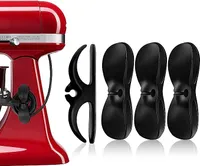How to organize kitchen appliances – both on counters and in cabinets
Whether you stow gadgets away or leave them out on display, keeping your appliances organized is a simple but crucial part of maintaining a practical cook space

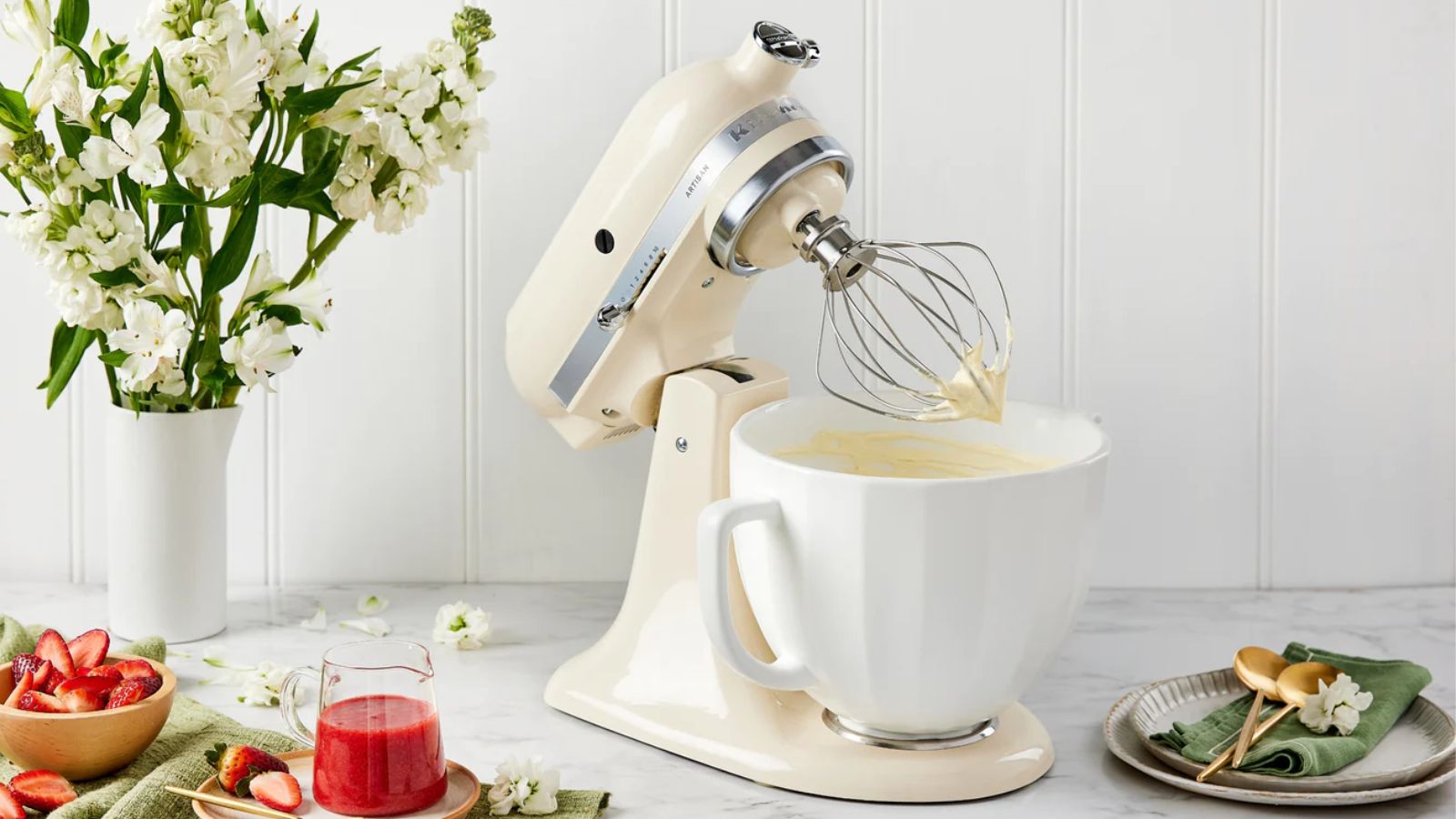
A kitchen wouldn’t be a kitchen without a vast array of appliances – both essential and fun – to make great meals. But how do you organize kitchen appliances when your kitchen is already full to bursting?
The trick to organizing a kitchen with so many bulky machines is to declutter them first. But once you have worked out what you need to keep and what can go, it is important to find the best place for everything – whether that means putting it in a logical place where you can access it easily, or storing it somewhere safe to prevent accidents.
Here, professional home organizers have shared their top seven organizing and decluttering tips for kitchen appliances, so you can create a perfectly pragmatic workspace.
How to organize kitchen appliances
Of course, one of the most important steps when organizing is to declutter first, but it helps if you try to stay away from those attention-grabbing single-use machines in the first place, says Georgina Burdett, professional organizer and founder of For the Love of Tidying.
‘Kitchen appliances are the most overbought and under-used category of items in a home. From the latest gadgets to great ideas which are just not time-efficient! Before buying any kitchen appliance, ask yourself if this is something that will be used for months or years to come, can you really integrate it into your cooking routines? If the answer is no, keep it away from your kitchen! Then try to only shop at the best places to buy kitchen appliances to ensure you have quality.'
Here is how to tackle the rest.
1. Keep appliances in categories

Appliances, both big and small, should be ‘zoned’, so to speak. This means putting them together with other like appliances that you are likely to use at the same, or a similar, time, suggests Marine André, a home organizer at En route to Joy.
Design expertise in your inbox – from inspiring decorating ideas and beautiful celebrity homes to practical gardening advice and shopping round-ups.
‘In terms of large appliances, put ovens near your cooktops, fridges near freezers, dishwashers near sinks, for instance,’ she begins.
The same can then be applied to smaller countertop appliances, opting to keep bread makers with stand mixers, toasters, and blenders near your breakfast items, and so on.
‘They need to make your life easier,’ Mariane reminds. ‘This is a really simple way to do that so you avoid going up or down the kitchen to get appliances out and store things away.’
2. Choose the shelf based on frequency of use
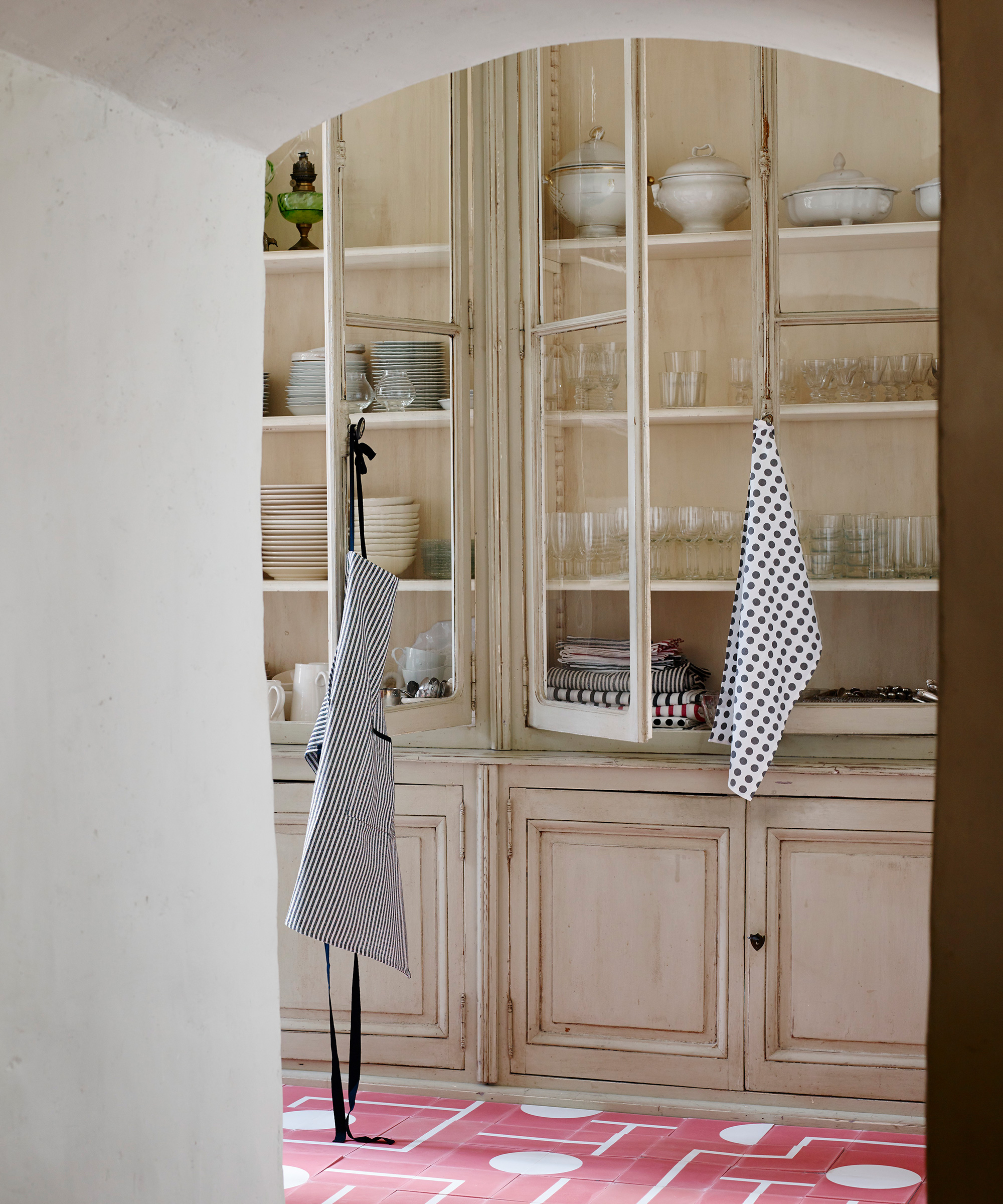
If you want to start organizing your kitchen like a chef, then it is time to start thinking less about the aesthetics of your kitchen cabinets, and more logically about where to store your appliances, Georgina Burdett, professional organizer and founder of For the Love of Tidying recommends.
It might seem obvious, but you should always keep the lesser used appliances on the top shelves and in the back corners, so that your hero appliances are easy to reach at hip height, or at the very front, she says. ‘Try to also keep these nearest to where you actually work and prepare food,’ Georgia adds. ‘You are more likely to use your appliances then, and make sure they are not a waste of money or kitchen storage space.’
3. Keep heavy appliances on the lowest shelves
That being said, some appliances can pose a hazard if stored too high up. Stand mixers, for instance, are infamously heavy, and should always be stored on lower shelves, hip height and lower to make lifting it up and out safer – preventing you from dropping it on your head.
Lauren Saltman, professional organizer and founder of Living. Simplified., suggests that you can be a little more creative about storing items like this when planning a kitchen. For heavy appliances, consider a ‘drawer or shelf with extra support to hold the extra weight that can slide out, allow you to use the appliance, and then slide back away again.
If you don't have space for bulky appliances, consider swapping them for some of the best appliances for small kitchens, which may be smaller or lighter, making them easier to store safely.
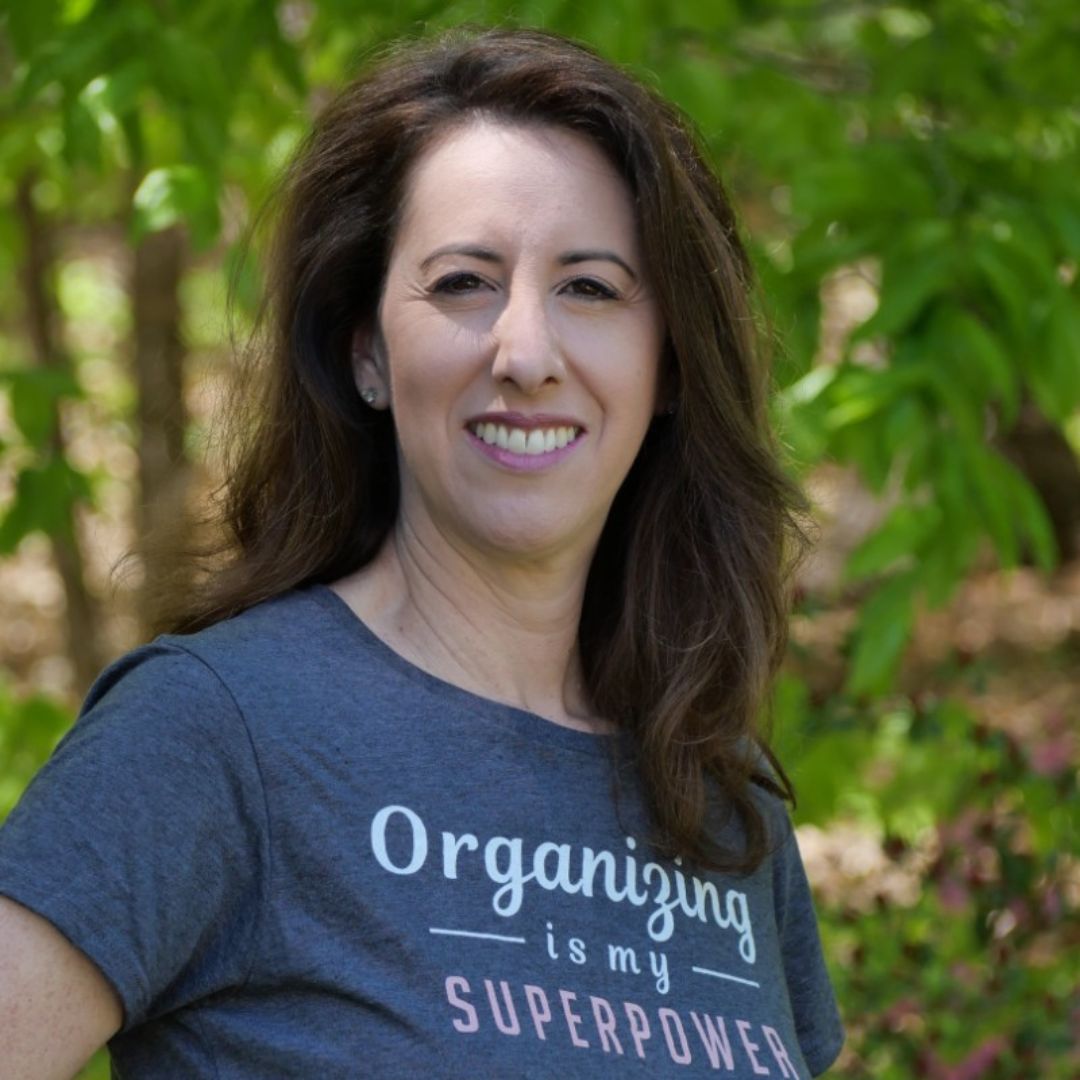
For Professional Organizer Lauren Saltman of Living.Simplified., decluttering and organizing is how she lives her daily life, whether she is organizing her home, a friend’s office, or a client’s garage, her resourceful approach yields happy clients who learn to incorporate techniques for a happier and more simplified lifestyle.
4. Only keep the absolute essentials on counters
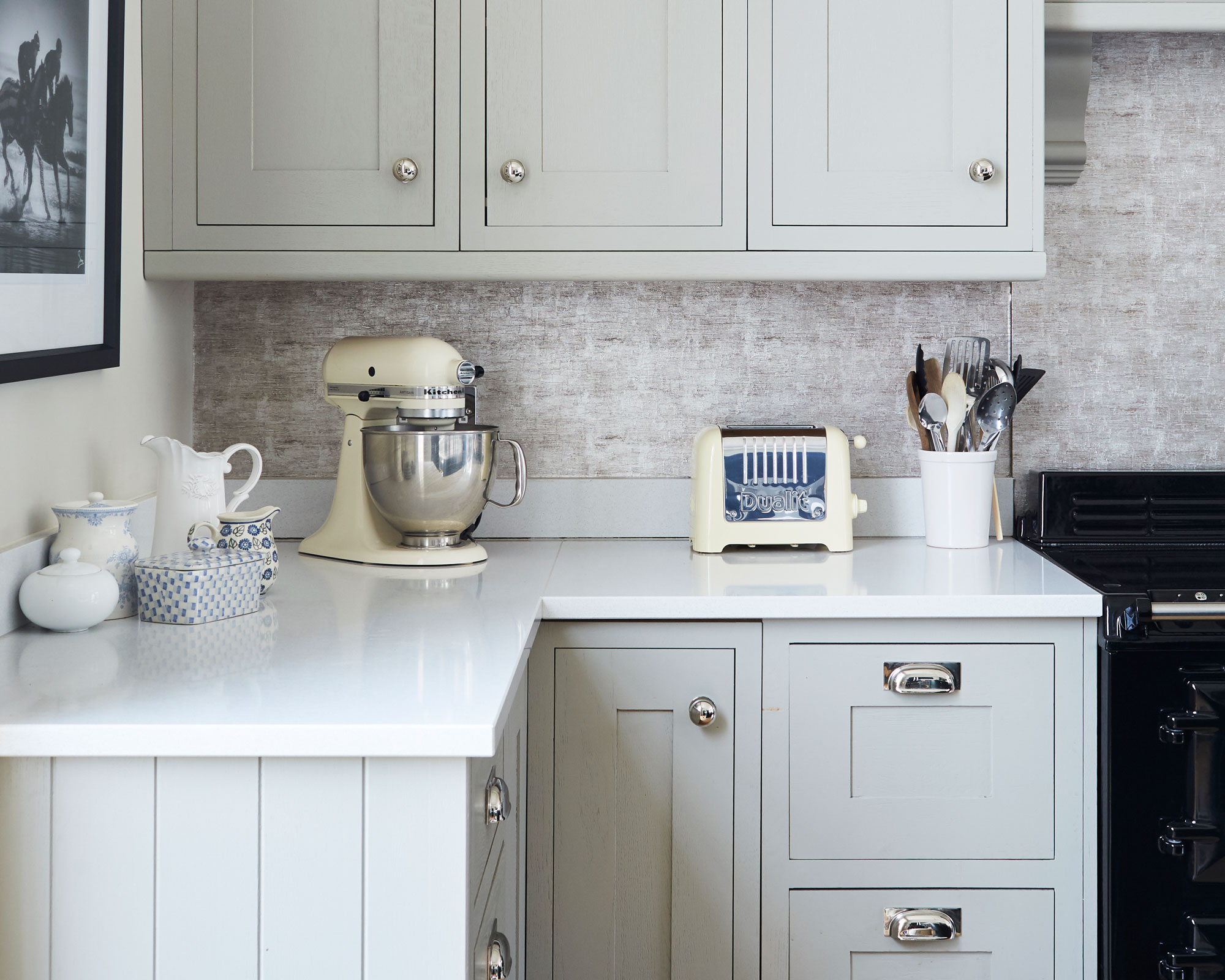
The art of organizing kitchen countertops is to keep as little as possible visible on the surface, other than some odd bits of kitchen decor, to make the space functional. As a result, decluttering countertops and keeping your appliances in cabinets and drawers should be a priority where possible, Marine André, home organizer, believes.
‘It might sound brutal but it's so quick to clean your counter when it's all empty. And the look of it will bring you joy each time you step into your kitchen.’
That being said, if you are lacking in cabinet space, then the odd few essential appliances could remain in view, continues Emma Rostron, cleaner and organizer at One Less Thing.
‘Think about which items you use the most throughout the week, and ensure that they either have a dedicated space on the kitchen surface or are placed somewhere that’s easily accessible. Floating shelves can be a convenient way of storing frequently used items as they’re constantly on display, but you could also consider leaving them at the bottom of a cupboard,’ she adds.
This could apply to the toaster or blender, perhaps if you regularly use it for breakfast, the coffee machine that you rely on throughout the day, or even, perhaps, a stand mixer if you are an avid baker that relies on it once or more every week.
5. Keep wires wrapped up and neat

One of the biggest sources of visual clutter is not the kitchen appliances, but the cables and cords that can litter your countertops.
As a result, it is essential that you unplug your appliances when they are not in use and wrap wires around the appliance so these are not becoming tangled in the drawers, and to make more space to squeeze other appliances in, recommends Georgina Burdett, professional organizer.
For appliances left out on the side, consider some clever ways to hide kitchen appliance cords, such as rerouting the wires with clips, or decorating in front of them with some aesthetically pleasing kitchen decor.
Stick-On Cable Tidy | $8.99 at Amazon
These cable tidies can be used on nearly every kitchen appliance, and are great for keeping cables and cords tidy and away from potential damage.
6. Don't hold onto appliances you don't use regularly
Particularly important if you are organizing a kitchen when you downsize or are working with a small kitchen, decluttering the appliances you don't use is essential – even if it is hard work.
‘We can mistakenly fall into keeping some kitchen appliances ‘in the hope to use it someday’ but that day never seems to materialize,’ Catherine Hamilton-Cooper, professional declutter and organizer at Declutterbird relates. ‘Be honest with yourself. Are you really going to make bread with that bread maker? If that ice cream maker has only been used once since you bought it five years ago, is it worth taking up precious space in your kitchen?
‘Waffle makers, popcorn makers, and donut makers are all one-product maker appliances, but in many houses are rarely used, if ever at all. Really think about the benefits of keeping them versus the space you are losing by storing them.’
Consider what it is you really do in the kitchen when choosing the best kitchen appliances for your space to prevent wasting money or having to declutter later.
7. Get rid of paper manuals
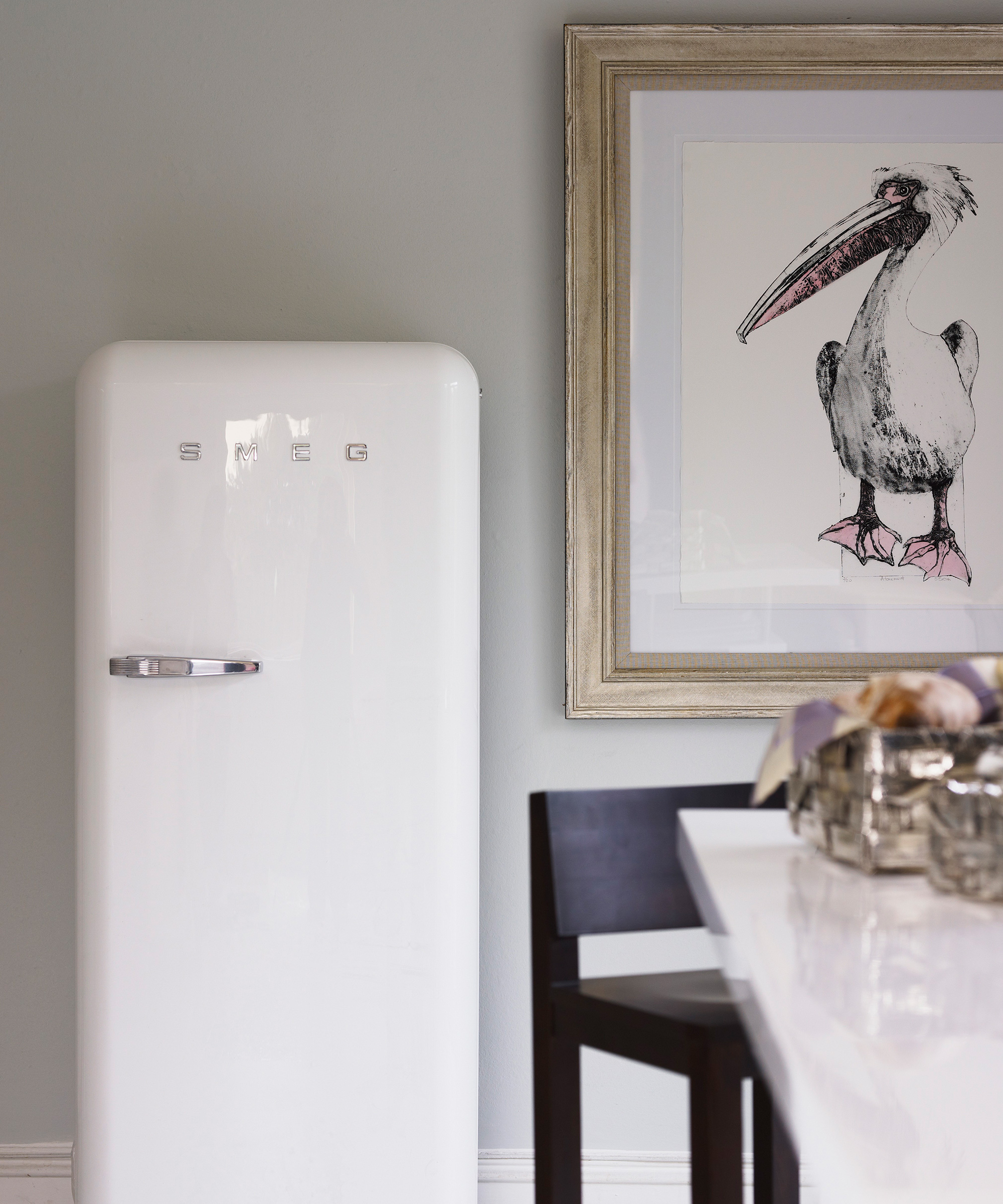
When organizing your kitchen appliances, you should not forget about the bulky paper manuals that many of us hold on to (and then never actually use once we have worked out the machine once).
This is another example of holding on to something just in case, but, as Catherine Hamilton-Cooper, professional declutter, points out, many manuals are now available online, so it is safe to toss them into the trash and free up some drawer space. To make finding the information you need even smoother, there are now programmable sticker tags called NFC tags, available on Amazon, that you can link to the digital manual. You can then simply tap it with your phone to bring you immediately to the notes, making the process even more streamlined. What’s more, if you can't find the manual online, you always have the option to manually scan your document into a digital app before disposing of it, recycling it where possible.
FAQs
How do you arrange kitchen counter appliances?
For appliances you want or need to keep on your kitchen counters, it is best to keep them grouped together and towards the back of your counter in order to make space for preparing food. Use trays to corral appliances like toasters, electric kettles, and blenders together in corners, as this can help to limit visual clutter, and pull them forward as you use them.
You should also try to tidy cords up between uses too, using cable clips to prevent cables from adding further clutter to your countertop.
When organizing our kitchen cabinets, making space for appliances is paramount, so it may be a good idea to leave one whole cabinet dedicated to electricals, rather than the odd shelf here and there, especially in a small space. This way, you are keeping the bulk of your appliances (which may be dirtier or greasier than you think as you can’t submerge them to wash them) away from your food items.

Chiana has been at Homes & Gardens for two years and is our resident 'queen' of non-toxic living. She spends most of her time producing content for the Solved section of the website, helping readers get the most out of their homes through clever decluttering, cleaning, and tidying tips. She was named one of Fixr's top home improvement journalists in 2024.
